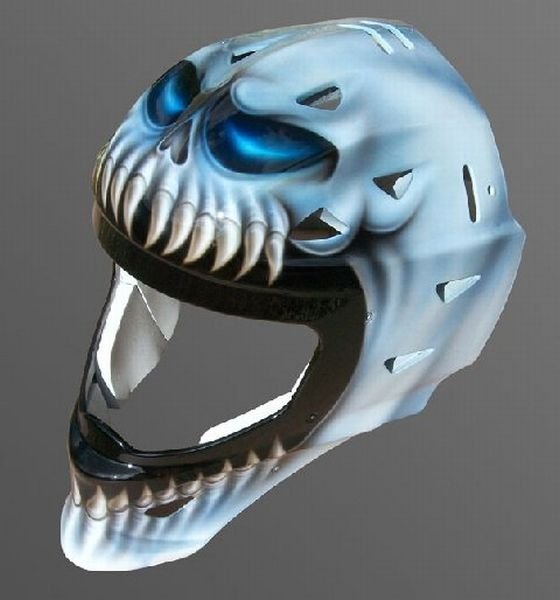|
|
Hockey Goalie Mask
|
The second type of goaltender mask is a fiberglass mask with a cage attached in the middle. It can also be made out of carbon fiber, or a fiberglass and kevlar mix. These masks are able to better withstand the impacts of hockey puck at higher speeds and are used at all levels of organized ice hockey. These masks are considered safer since they disperse the impact of the puck better than the helmet/cage combination. Tim Thomas of the Boston Bruins wears a newer style one piece called a Sportmask Mage RS, made like the newer fiberglass mask, but resembles the helmet/cage combination.
Tactical play
The advent of the goaltender mask changed the way goaltenders play, allowing them to make more saves on their knees without fear of serious head or facial injuries. Before the advent of the mask, most goaltenders stayed standing as much as possible. In the modern era, a goaltender is likely to make the majority of saves when he has one or both knees on the ice. With the technological advancement of the mask, shots hitting the head cause more temporary discomfort instead of serious concussions and lacerations; however, a mask does not guarantee avoiding injury, and goaltenders have been concussed by a shot hitting the head. Some goaltenders, like Dominik Hasek and Henrik Lundqvist, have used their heads intentionally to stop shots. Lundqvist said that his reason for this is to not obstruct his vision by placing his catching glove in front of his mask to stop the shot.
|
|









